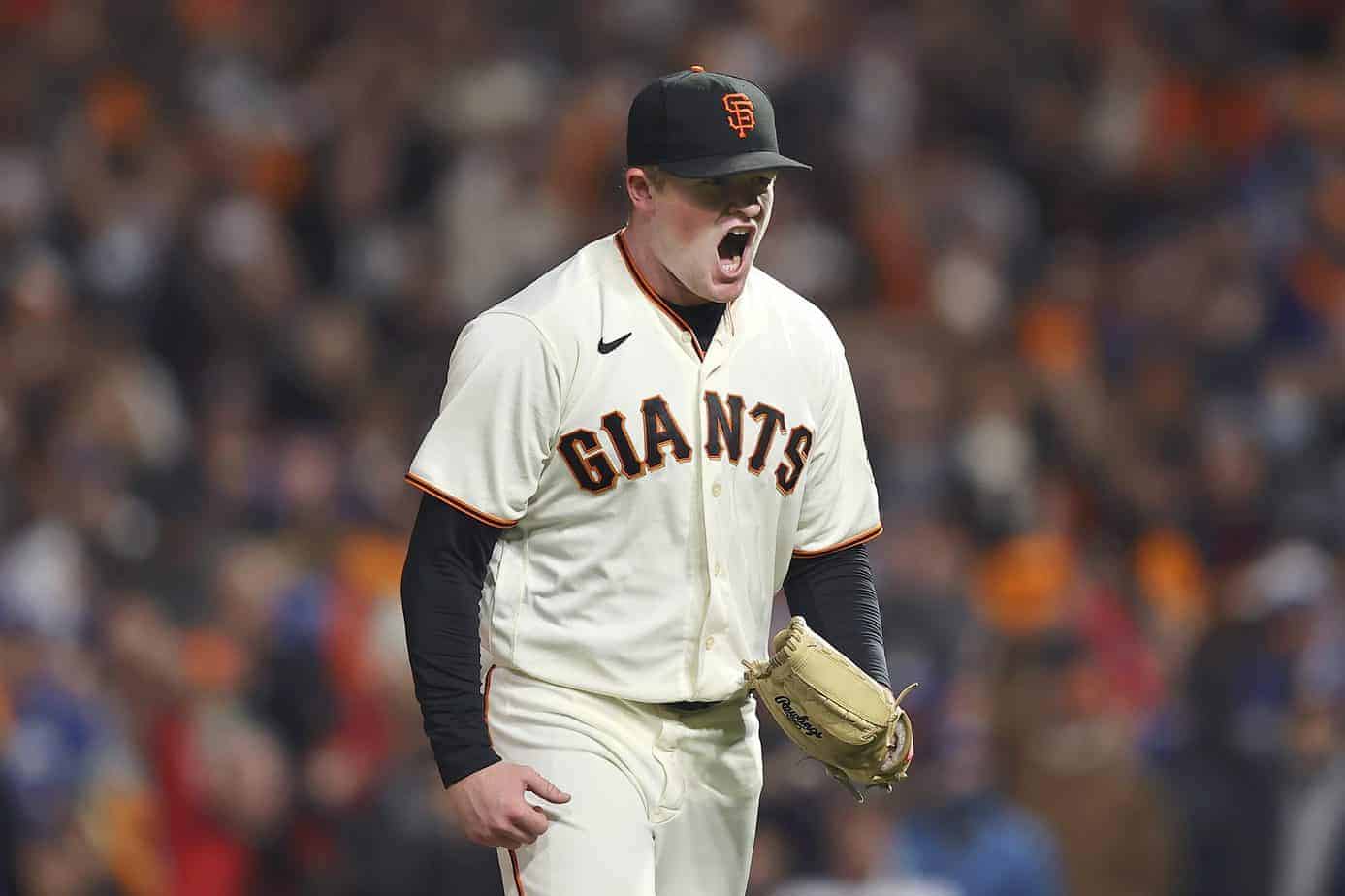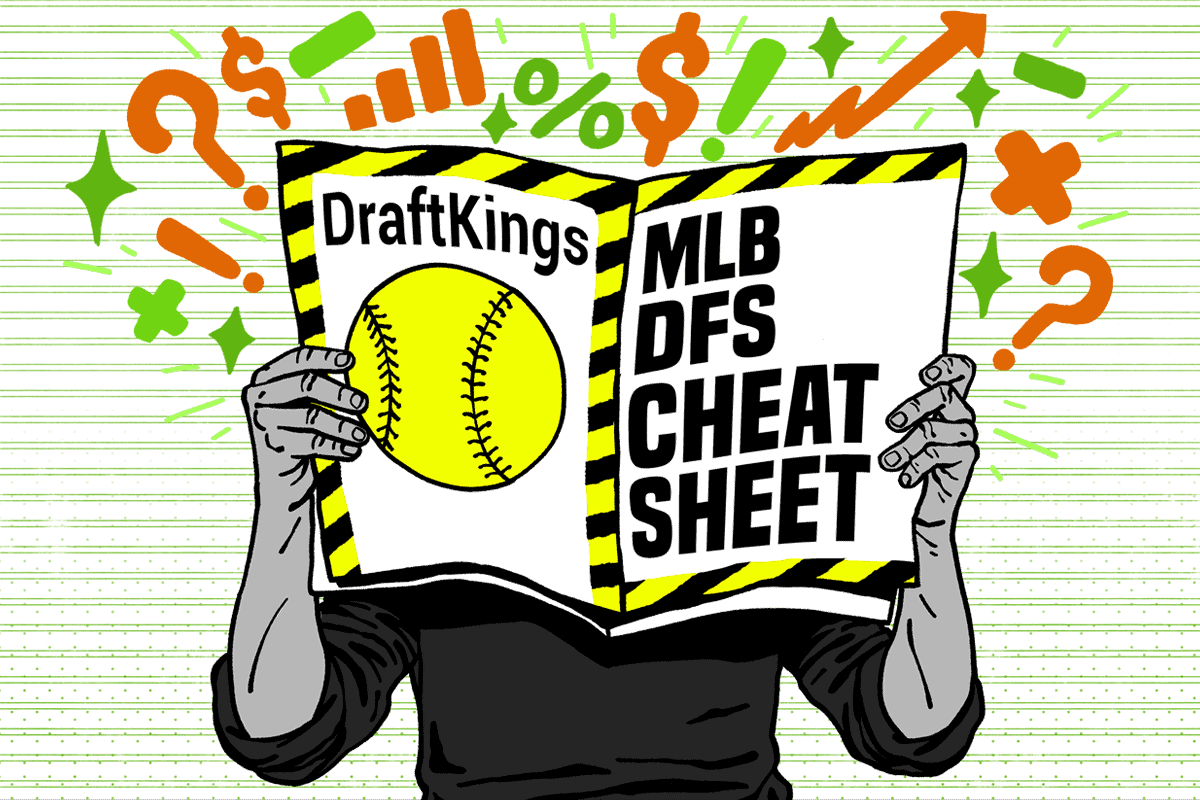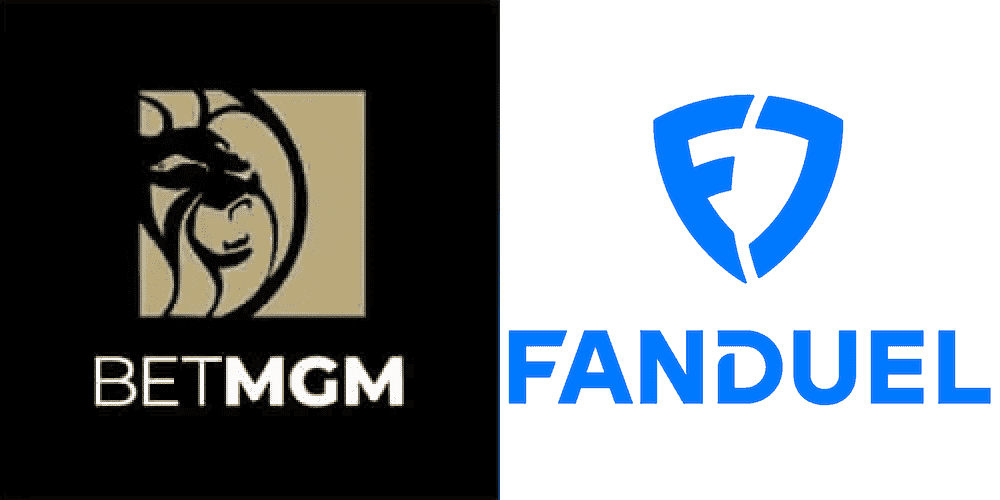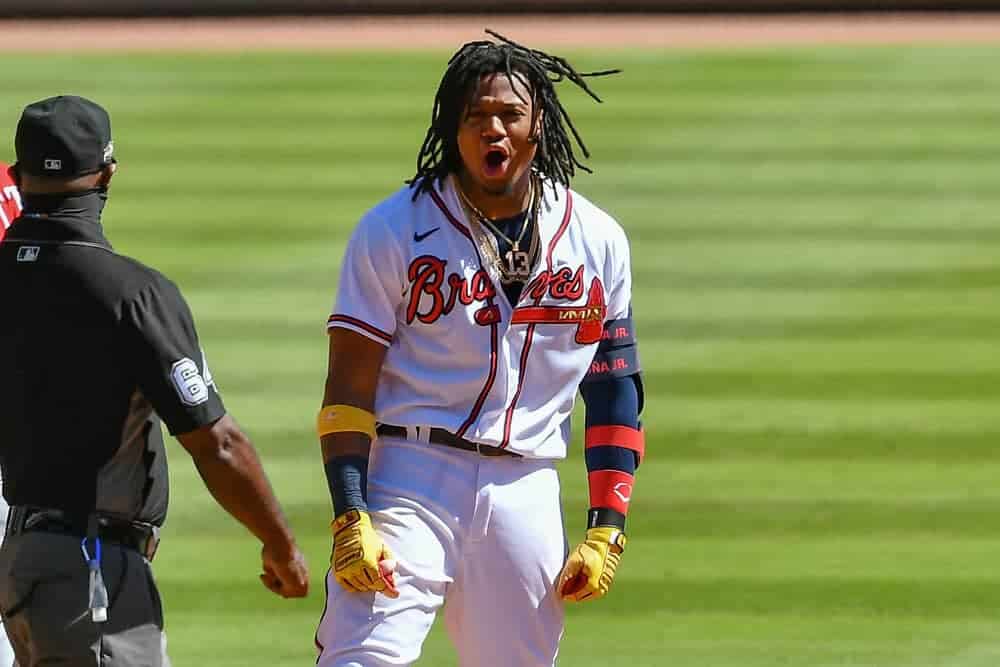Matt Savoca’s Daily Fantasy Football Matchups Column returns for Week 16 of the NFL DFS season. In it, he goes through every single game on the NFL DFS main slate on Sundays for your season-long fantasy football lineups on Yahoo, ESPN and CBS and your NFL DFS picks on DraftKings and FanDuel. There are 10 games on tap for Week 16, so let’s dive into the action.
[CARUSO]
[SportsbookAffiliates]
Week 16 NFL DFS Matchups Breakdown
Daily Fantasy Football Matchups: Early Games
New York Giants at Baltimore Ravens
Cleveland Browns at New York Jets
Chicago Bears at Jacksonville Jaguars
Indianapolis Colts at Pittsburgh Steelers
Houston Texans at Cincinnati Bengals
Atlanta Falcons at Kansas City Chiefs
Daily Fantasy Football Matchups: Afternoon Games
Carolina Panthers at Washington Football Team
Denver Broncos at Los Angeles Chargers
Seattle Seahawks at Los Angeles Rams
Philadelphia Eagles at Dallas Cowboys
(44) New York Giants (17) @ Baltimore Ravens (27)
All Graphs Reflect Last Five Weeks of Data, Click Graphs to Enlarge
Team Passing and Pace
First, let’s take a look at the possibility of this game turning into a shootout, as teams that play faster and pass more than average tend to score more fantasy points. When both teams play aggressively, it often creates a game environment perfect for fantasy scoring. Games have a higher probability of going over their Vegas total as well. Ideally, we’re seeking matchups where both teams are in the upper-right quadrant of the chart below (see the chart’s caption for more details).
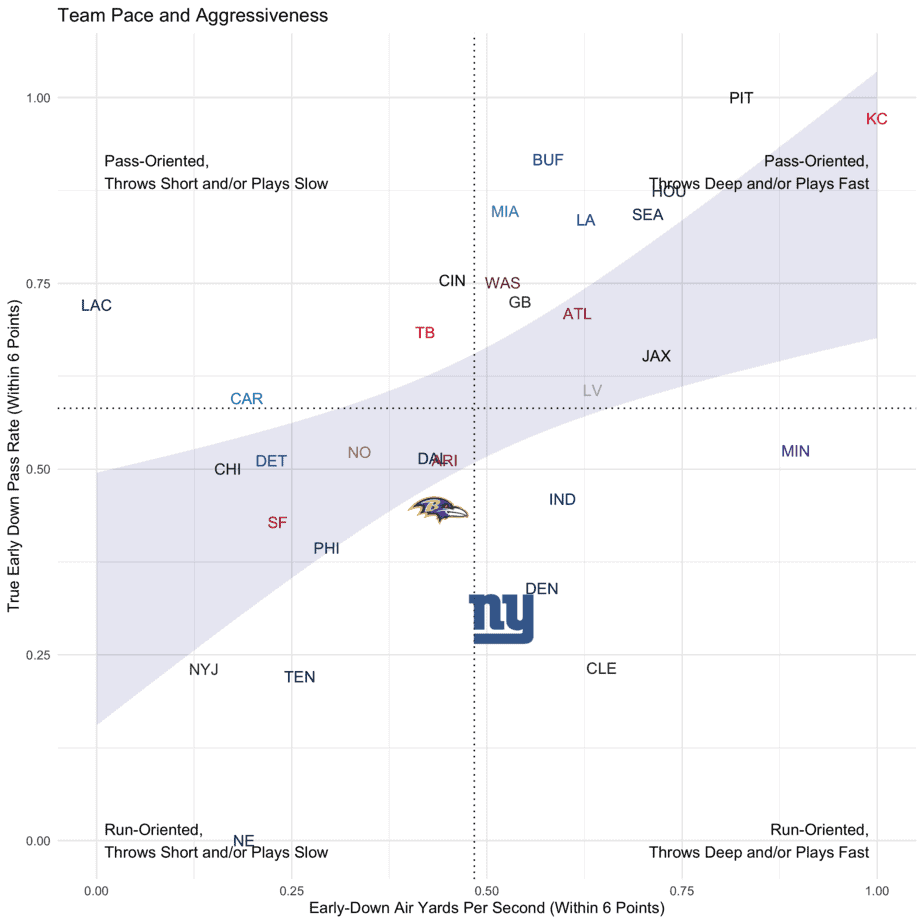
Not unexpectedly, both the Ravens and Giants operate run-oriented offense with a pace of play right around league average. The Ravens, as they’ve proven time and time again, are outliers, as they’re the rare team that can light up the scoreboard without relying on passing or fast-paced play, but don’t expect New York to push the tempo in this contest either.
Recent Quarterback Performance
Next, let’s examine the starting quarterbacks’ recent play. Sustained drives in the NFL rely on efficiency at the quarterback position, so I’ve identified my three favorite performance indicators for assessing quarterback performance. The three bar charts below (see the graph’s caption for more detail) represent a quarterback’s per-drive efficiency (left bar-chart), per-play efficiency including rushes/scrambles (center) and per-pass efficiency (right). Higher rankings from both players indicate a higher likelihood of efficient play, thus a higher probability of fantasy points.
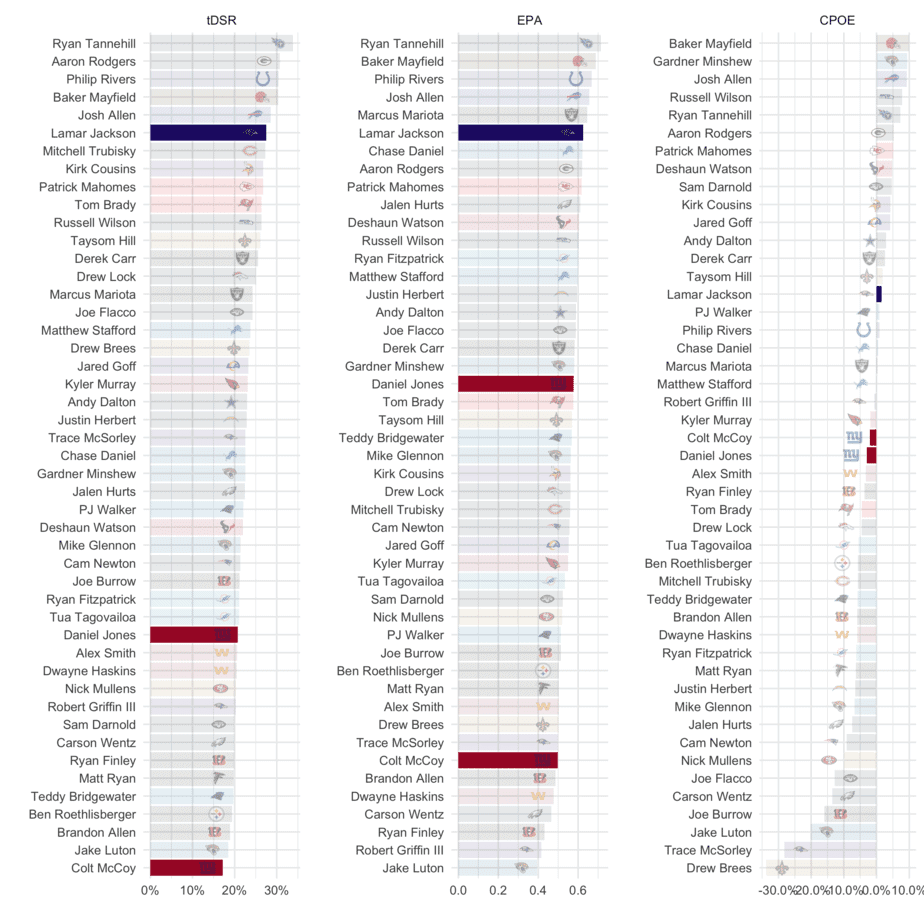
While it’s obvious from this chart that Daniel Jones gives the Giants a much better pass to win than Colt McCoy, it’s also obvious that Lamar Jackson, even in a down year efficiency-wise, is on a different planet than either Giants’ quarterback. The only person who can hold back Jackson from being the most efficient passer in this game is Lamar Jackson; all he needs to focus on is limiting his mistakes as a passer (in the chart on the right, Jackson is just league average on a per-pass basis), and he should have a monster game this weekend.
NFL DFS Player Pool Picker: Upside Analysis
Now let’s examine the primary skill players from each offense. Unless participating in a large-field tournament, these are the players you should be focusing on in your daily fantasy football lineups. For each player, I’ve made it easy to compare their per-game fantasy (in column 3) to their DraftKings main slate salary ranking (in column 2). Column 4 ranks the player using my favorite position-specific volume metric: Expected fantasy points, which is curated by PFF. The Defense vs. Position column is an extremely helpful position-specific and player-group specific (for example, the metric delineates between primary wide receiver vs. secondary wide receivers) metric that helps determine if an offensive player is likely to be in a position to exceed their expected fantasy points. Higher numbers in the Defense vs. Position column indicate easier matchups for the offense, while numbers closer to one indicate a stout defense against that specific position-group.
The final column, Expected Projection, combines a player’s expected fantasy points with their weekly matchup into one helpful value metric. Apart from the Awesemo projections (which should still carry the most weight in determining player value), Expected Projection is one of my favorite metrics to help me narrow down my favorite plays of the week. The rankings are always specific to the slate, meaning if a player or team is ranked No. 1 at a specific metric, they may not necessarily be ranked No. 1 in the NFL, but they are for this specific slate.
New York Giants NFL DFS Core Offenses
| Team | Player | Positional Salary Rank | FPTs/Gm Rank | Expected FPTs/Gm Rank | Defense vs. Position | Expected Projection |
| NYG | Colt McCoy, QB | #18 | #21 | #29 | #25 | 10 Fpts (QB20) |
| NYG | Wayne Gallman Jr., RB | #18 | #9 | #17 | #30 | 13.5 Fpts (RB6) |
| NYG | Sterling Shepard, WR | #32 | #44 | #50 | #17 | 9.5 Fpts (WR34) |
| NYG | Darius Slayton, WR | #44 | #66 | #83 | #28 | 7 Fpts (WR55) |
| NYG | Evan Engram, TE | #10 | #9 | #10 | #23 | 10 Fpts (TE7) |
The Ravens rank shockingly low in these position-centric defensive metrics. The Ravens ranked in the top-10 against quarterbacks and wide receivers a year ago, but it appears injuries have caught up with them this season. The Baltimore struggles against teams with three legitimate receiving weapons, and if the Giants’ offense has anything, it’s that. Evan Engram has a particularly strong expected projection, even compared to his seventh-highest tight end salary on the main slate.
Baltimore Ravens NFL DFS Core Offenses
| Team | Player | Positional Salary Rank | FPTs/Gm Rank | Expected FPTs/Gm Rank | Defense vs. Position | Expected Projection |
| BAL | Lamar Jackson, QB | #2 | #2 | #6 | #2 | 19.5 Fpts (QB7) |
| BAL | J.K. Dobbins, RB | #13 | #13 | #26 | #24 | 13 Fpts (RB7) |
| BAL | Marquise Brown, WR | #17 | #33 | #50 | #14 | 9.5 Fpts (WR34) |
| BAL | Mark Andrews, TE | #2 | #2 | #4 | #20 | 10.5 Fpts (TE6) |
| BAL | Gus Edwards, RB | #29 | #15 | #32 | #24 | 11 Fpts (RB16) |
The Giants have managed to contain opposing quarterbacks for the most part in the second half of the season, but Lamar Jackson remains a strong floor play this week, despite an expected projection that ranks him lower than salary-based expectations. With New York ranking in the bottom-10 in the league in schedule-adjusted fantasy points allowed to running backs, fantasy gamers can feel comfortable slotting-in any of three primary ball-carriers (Jackson, Dobbins, Edwards). Mark Andrews seems like a significantly stronger play than Marquise Brown, based on the table above.
NFL DFS Backfield Values: Running Back Opportunities
Nailing the running back position in your fantasy football lineups is vitally important. There are many metrics that help fantasy gamers determine which running backs earn higher-value touches than their peers, but my favorite is Quality Opportunities per game. It only counts running back looks that come via the receiving game (as receptions are much more valuable on a per-play basis than rushes) or via goal line rushes (inside the opponent’s 10-yard line) since there isn’t anything more valuable than a touchdown.
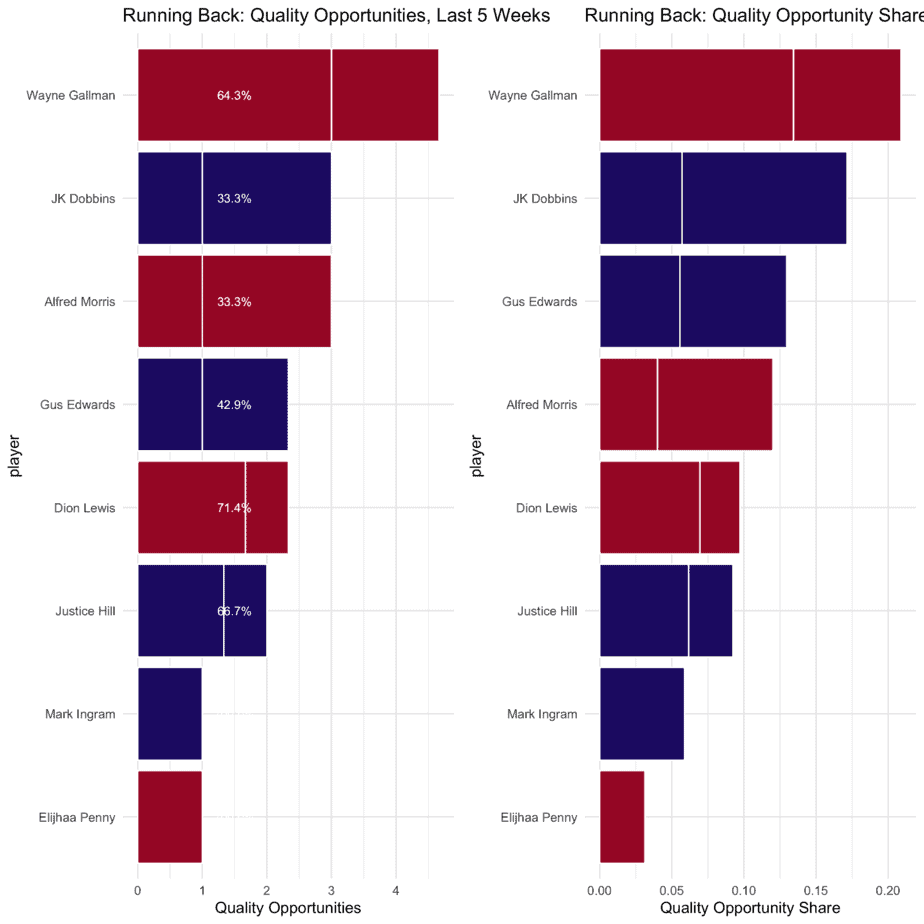
Wayne Gallman looks like a fine contrarian play this weekend. Gallman, from an overall opportunity standpoint, will likely be the highest-volume running back in this contest, and New York has committed to Gallman at the goal line, with Gallman averaging over one carry from inside the ten per game over the last five weeks. If Gallman’s workload shouldn’t be interested. J.K. Dobbins remains the lead-dog of the Baltimore backfield (besides Lamar Jackson), but Hus Edwards continues to have a significant role, averaging just one less quality opportunity per game than Dobbins over the last five weeks.
NFL DFS Receiving Values: Skill Position Opportunity Ranges
The wide receiver and tight end positions are two of the higher-variance positions in all of daily fantasy football, so it’s important to consider both floor and ceiling when predicting a player’s usage. Players with unexpectedly high opportunity in the passing game often have the best chances to outperform their projections, so I created a chart that measures a player’s opportunity range of outcomes (see the caption of the graph for more details on how this is calculated.). The horizontal bars represent a player’s expected opportunity range, while the center dot represents their average opportunity.
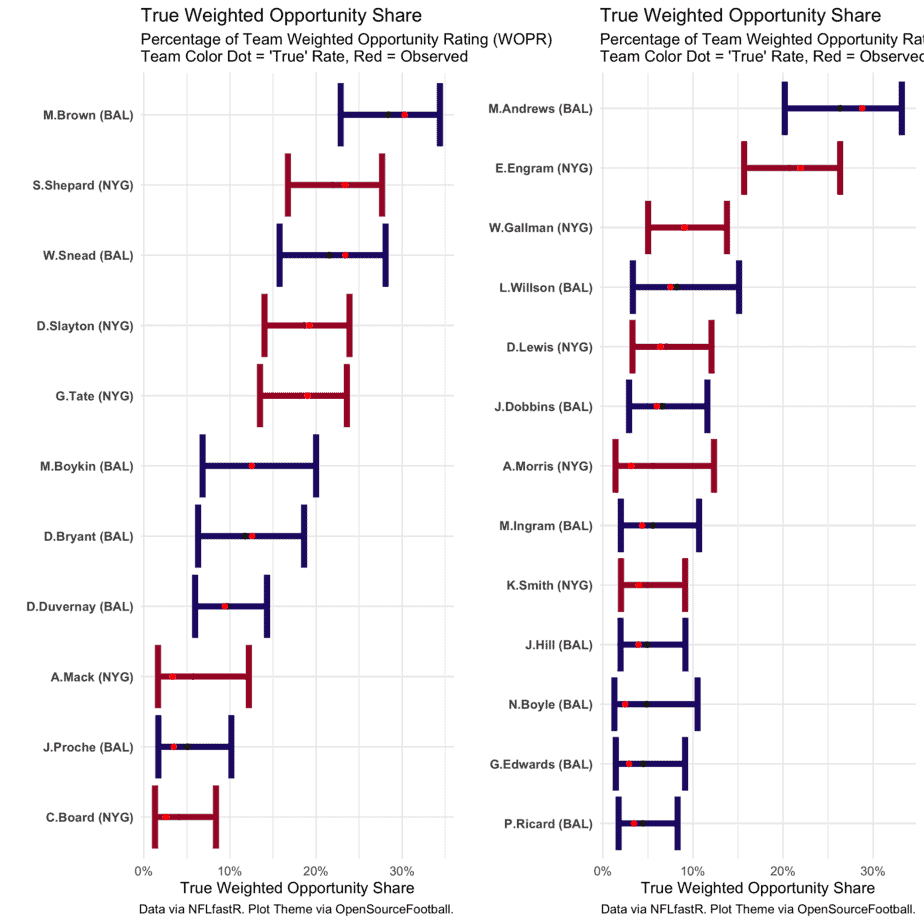
The chart above does a great job of visualizing the relatively consolidated nature of Baltimore’s low-volume passing attack, with a significant number of the receiving upside captured by Mark Andrews and Marquise Brown. Only Willie Snead looks like a consistent third contributor with upside, but Snead very likely needs multiple scores to be a worthy play this weekend. For the Giants, Evan Engram and Sterling Shepard seem to have relatively high ceilings in this spot, but Darius Slayton and Golden Tate easily could earn equal volume to either player. If McCoy starts once again, New York’s receivers can be avoided in all contests except large-field tournaments.
NFL DFS Auxiliary Offensive Players for Large-Field Contests
In daily fantasy football, depending on the size and type of contest you’re playing, it’s often advantageous to expand your player pool to less-utilized offensive players. In this section, we examine every part-time player’s usage based on playing time, opportunity and (again) defensive matchup. For each player, I create an Opportunity Score, which scales a position-specific opportunity metric between zero (least valuable) and 100 (most valuable). Scores above 50 tend to indicate starter-level opportunity, while scores over 80 indicate star-level usage. Finally, I categorize the players as an NFL DFS value, a mass multi-entry option (MME-only) or a player to avoid altogether.
New York Giants NFL DFS Tournament Picks
| Team | Player | Snap Share | Opportunity Score | Defense vs. Position | Outlook: Value, MME-only, Look Elsewhere |
| NYG | Golden Tate, WR | 49% | 54 | #20 | MME-only |
| NYG | Alfred Morris, RB | 20% | 40 | #30 | Look Elsewhere |
| NYG | Dion Lewis, RB | 26% | 57 | #30 | Look Elsewhere |
| NYG | Kaden Smith, TE | 55% | 10 | #23 | Look Elsewhere |
Baltimore Ravens NFL DFS Tournament Picks
| Team | Player | Snap Share | Opportunity Score | Defense vs. Position | Outlook: Value, MME-only, Look Elsewhere |
| BAL | Willie Snead, WR | 69% | 80 | #19 | Look Elsewhere |
| BAL | Miles Boykin, WR | 46% | 37 | #1 | Look Elsewhere |
| BAL | Dez Bryant, WR | 35% | 41 | #1 | Look Elsewhere |
| BAL | Devin Duvernay, WR | 41% | 37 | #1 | Look Elsewhere |
| BAL | Justice Hill, RB | 12% | 51 | #24 | Look Elsewhere |
With this matchup likely focused on dueling ground-games, the tertiary receivers don’t look particularly enticing, with the Giants’ Golden Tate being the sole exception. Tate’s 49% snap share makes him a thin play this weekend, nonetheless
Final Thoughts
The Ravens should win this game easily, and that makes all of their core weaponry viable in daily fantasy football lineups, but the Giants ranking better than expected against the pass, and the Ravens falling below league-average in the same metrics, creates opportunities for contrarian game stacks that involve Baltimore rushers (including Jackson) with Giants’ receivers.
Prediction: Ravens 28, Giants 17
Looking for more NFL DFS picks and daily fantasy football matchups content? We have loads of articles, data and more on the Awesemo NFL home page. Just click HERE.


